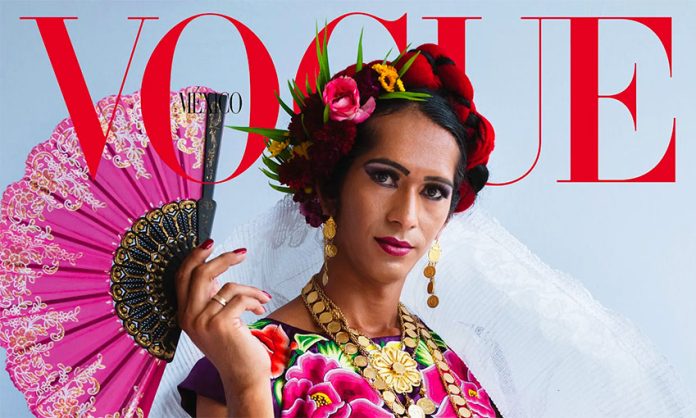A transgender muxe from Juchitán, Oaxaca, will appear on the cover of the December issue of Vogue magazine’s Mexican and British editions.
The issue marks the first time in the magazine’s 120-year publishing history that an indigenous transgender person will grace the cover.
The muxes of Oaxaca’s Isthmus of Tehuantepec are a third gender of men raised as women to assume traditionally feminine roles in the home, society and economy.
December’s cover features Estrella Vázquez, 37, of Juchitán wearing a traditional huipil, a velvet blouse embroidered with vivid floral patterns and a string of gold coins called centenarios around her neck.
The cover is a sign of diminishing bigotry in Mexico for Vázquez.
“I think it’s a huge step,” she said. “There’s still discrimination, but it’s not as much now and you don’t see it like you once did.”
Vázquez and a dozen other muxes from Juchitán were invited to participate in the historic photoshoot in August in Huatulco, Oaxaca.
“Everyone is seeing this cover, everyone is congratulating me. I don’t know; it’s just hard to make sense of the emotions I’m feeling. It almost makes me want to cry,” she said.
Muxes typically assume the role of caregivers for their aging parents, which has earned them the respect of many in Oaxaca and elsewhere in Mexico.
However, intolerance of and violence toward this third gender still exist in the Isthmus of Tehuantepec.
“Although I live in a place that is more open to this life, I had to deal with bullying and many school complaints, so many that my mom used to say that she was at the school more than I was,” said Pedro Enrique Godínez Gutiérrez.
Interviewed for the Vogue article, she recounted the violence her community has faced in Juchitán in recent years.
“Dear, as of now we’ve got nine cases of hate crimes [in Juchitán]. We’ve even gone to Oaxaca city to make demands for justice, because there have been terrible acts committed [against muxes],” Godínez said.
Although many are activists for such causes as diabetes treatment, HIV awareness and protection and finding justice for disappeared loved ones, muxes would rather be partying.
The region is famous for its velas, multiple-day parties thrown to celebrate social circles and guilds, such as fishermen, construction workers and, yes, muxes, who have their vela in Juchitán in November.
Sources: The Guardian (en), Vogue México (sp)
